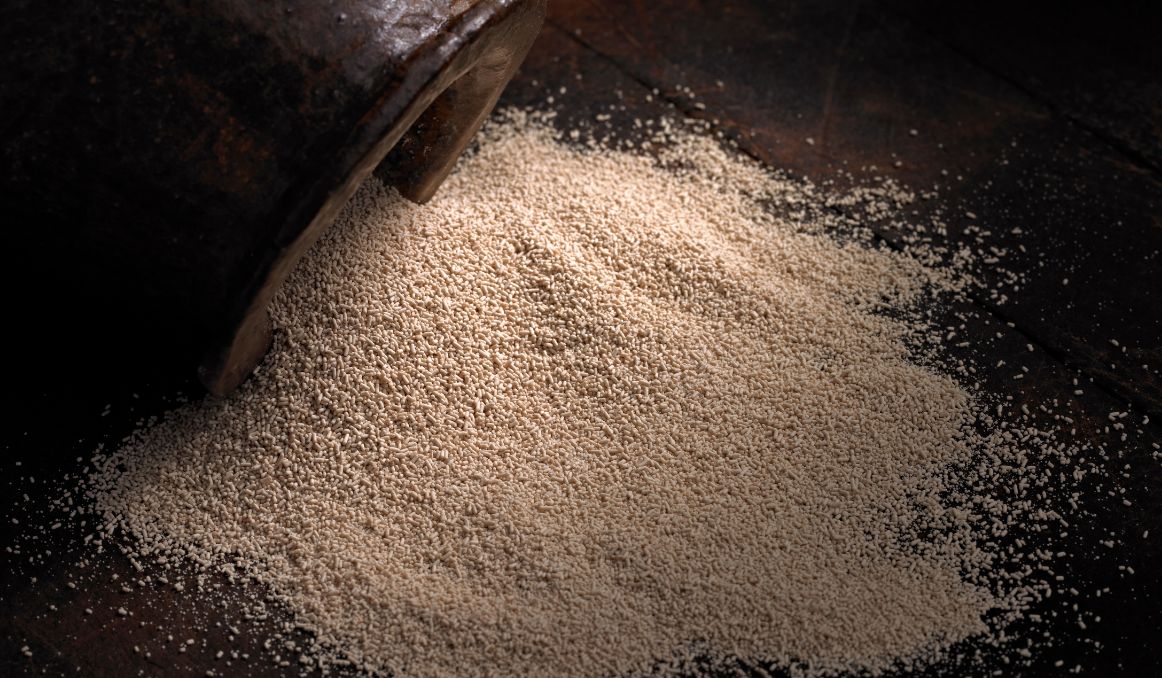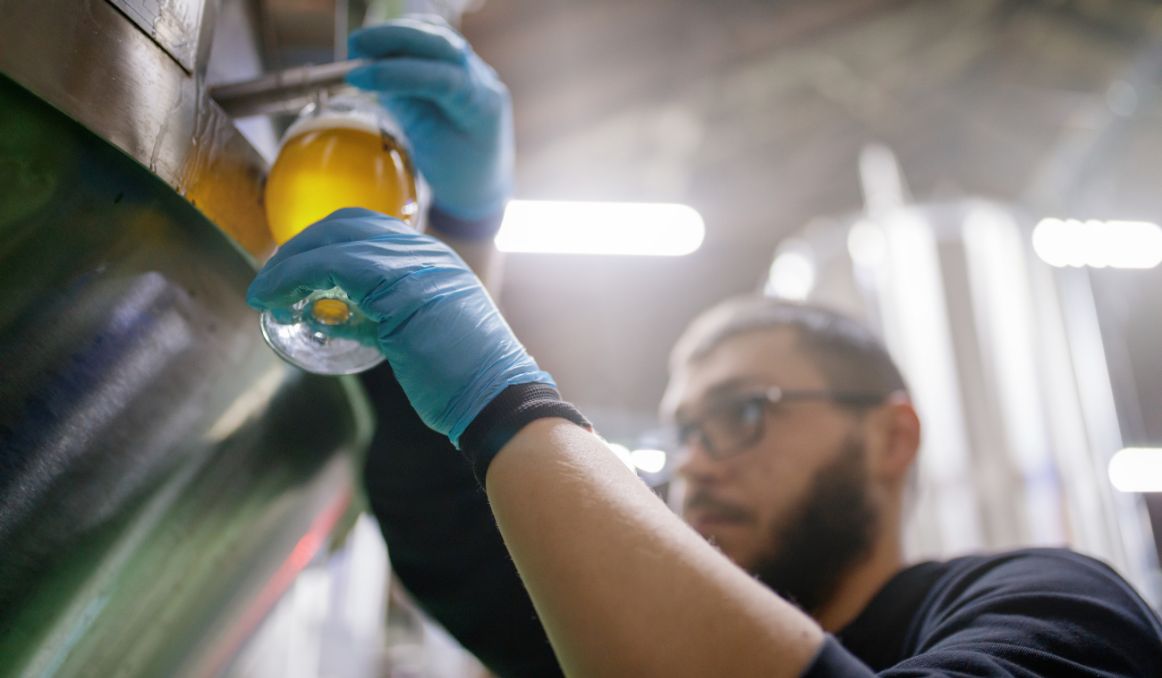Stressed Yeast Off Flavors: Causes & What to Expect
Once upon a time, people discovered that if they allowed fruit to ferment, that fruit would become alcoholic and create a euphoric effect (drunkenness). They followed this same process with grain. Thus, wine and beer were invented. The same thing happened with bread. The dough was left too long, yeast developed and fermented the bread, and voila, tasty risen bread was discovered.
One story even circulates that a man in Gaul in the first century AD used beer foam in his dough and discovered the wonders of adding yeast to make bread even better.
Yeast has played a role in the foods and beverages of humans for thousands of years.
But, if people have been using yeast successfully for so long, how does it all go so wrong sometimes? It is a question on many the beer and winemakers mind when you get off flavors as you make beverages. And how on earth does yeast get “stressed?” Understanding stressed yeast off flavors can help you prevent, or even exploit, them, depending on your mood and attitude.
The History of Yeast
Yeast is millions of years old, making its home with its fellows – mushrooms and mold – in the fungi family. Fungi were actually the first living organisms on the planet earth. Yeast is a single-celled, living organism that digests food to obtain energy for growth. That digestion is what we typically think of as fermentation. Yeast eats sugar and converts it to alcohol.

Yeast in Beer and Wine
In beer and wine, yeast is the ingredient that makes grape juice wine and barley water beer. The process early on was a natural one. The must (grape juice) or wort (barley water) was simply left out long enough that natural fermentation took place. Because the process relied heavily on nature, the flavors and aromas of the beer or wine were not always consistent because wild yeast is unpredictable.
Think of moonshine. The taste is not always great. But it will get you drunk. In many places, people just wanted a drink, so they did not worry too much about consistent flavors and aromas.
Yeast in Bread
The same story holds true for bread. Bakers would leave the bread out, and the naturally occurring yeast would arrive and eat the sugars in the sugar and flour. But because the carbon dioxide created during that process could not escape the elastic bread as it does in beer and wine, the bread expands and rises, coming to be known as “yeast leavened bread.”
Pasteur Effect
It was only a couple hundred years ago when scientist Louis Pasteur took out his microscope to examine beer and discovered what was actually happening. From that point on, people were able to culture, manufacture, and commercialize baker’s yeast and brewer’s yeast. That commercialized allowed for a standard, which led to the consistency we come to expect from our breads and brews today. Thanks, Louis!
Stressed Yeast?
What, then, you wonder, is stressed yeast, and what does it have to do with those off flavors in beer? Stressed yeast occurs when the yeast cannot do its very simple job of converting sugar to alcohol. There are a few things that get in the way of typical fermentation.
Excess Ethanol
Sometimes, there is too much sugar in the liquid to be converted to alcohol, and the job is simply too big for the yeast. It gets busy converting, alcohol (ethanol) is created at a high rate, but it gets overwhelmed, and at that point, fermentation will get stuck, creating an unexpected off flavor.
Too Much Yeast
If you pitch too much yeast into your wort, the yeast will ferment the sugar too quickly and then die off, leaving excess dead yeast in your beer. This excess is typically not a good thing in terms of flavors and aromas.
Too Little Yeast
When you pitch too little yeast into your wort, you get the same effect as excess ethanol. Your yeast becomes overwhelmed by more sugar than it can handle and gets “stressed,” essentially slowing down fermentation and possible stagnating it altogether.
Wild Temperature Fluctuations
Yeast will get stressed out by too hot or too cold conditions, and temperatures swings as well. It needs a nice cozy 68 to 70 degree F atmosphere to do its best work.
High Gravity
When you pitch yeast into a wort that has too high gravity, the yeast cell walls can burst, which leaves you with less yeast to convert your sugar, which winds you back to the “too little yeast” problem.

Oxygen
Sometimes, by circumstance, your yeast multiplies too quickly and takes up all of the oxygen in your liquid, which results in yeast cells with weak walls. This weakness can produce those off flavors in your beer.
Shear Stress
When you get stuck fermentation, one of the most common pieces of advice is to agitate it. You stir your wort up with a sanitized spoon and wait for the yeast to wake up and get back to work. When you agitate it too much, however, the yeast can become stressed and freeze, resulting in stuck or sluggish fermentation.
What to Do About Stressed Yeast
When yeast is stressed, you must then deal with the vitality (energy of your yeast) and viability (number of live yeast cells) issues.
You will know right away if your yeast is stressed, because you will smell the off aromas and you will notice fermentation is stuck.
The best thing to do to prevent this stress it to ensure you are pitching the right amount of yeast, maintaining a comfortable temperature, and that you are not over-agitating your fermentation tank.
If you need to restart your fermentation process because your yeast is stuck, check out our article on how to do that here.
Here’s to a stress free brewing process!
Passionate about the beer and/or wine making process? So are we! If you’re interested in finding out how you can use our technology to control fermentation and monitor your yeast, save work hours and improve the cost-efficiency of your business, drop us a line at [email protected] or check out our product pages:
- Oculyze BB 2.0 (Better Brewing) Yeast Cell Counter App + Hardware
- Oculyze FW (Fermentation Wine) Yeast Cell Counter App + Hardware
Also, you can now get access to a fully functional demo account to test our Web App. Completely free of charge and with no commitment to purchase.
Sources:
1. https://www.sciencedirect.com/topics/agricultural-and-biological-sciences/yeasts


